The genie moved the temple
According to folklore, in the past, this was a small temple worshiping the Three Religions' Founders (Confucianism - Buddhism - Taoism), but the locals called it the Temple of the Immortal Masters, the Temple of the Founders and the Temple of the Teacher. Currently, the temple is undergoing major renovations and repairs.
Many horizontal lacquered boards, parallel sentences on the columns and the memorial tablets of the Master in the main hall are still intact; the tablets have been moved to a temporary house and are worshiped together on several altars.
Mr. Huynh Anh Tuan, Head of the Board of Trustees, said that 3 years ago the temple was repaired and reinforced; however, because the temple foundation is low and the yard area is quite narrow, we have to consider raising and moving it. "We are hiring a "genie" in An Giang to do the construction, planning to raise the entire temple 1.5 m high and move it 2 m to the back, and at the same time raise the temple gate to match," said Mr. Tuan.

The ancient Tien Su temple is under construction - PHOTO: HOANG PHUONG

"Genie" prepares to raise the platform by another 1.5 m - PHOTO: HOANG PHUONG
Previously, in the main hall of the ancient temple, the main altar worshiped Duc Tien Su, on the left and right sides were altars to famous mandarins and generals such as Nguyen Tri Phuong, Phan Thanh Gian, etc. In addition, there were altars to the ancestors who had contributed to the land reclamation, and to the deceased dignitaries in the village who had contributed to building local welfare projects.
Write the temple sign
Nguyen Tri Phuong (1800 - 1873) was a great mandarin of the Nguyen Dynasty. In 1835, he received orders from King Minh Mang to go to Gia Dinh with General Truong Minh Giang to pacify the newly reclaimed areas. In the year Canh Ty 1840, King Thieu Tri appointed him as Governor of An Ha (An Giang, Ha Tien). Here, he defeated foreign bandits who came to cause trouble, was promoted to Governor of Long Tuong ( Vinh Long and Dinh Tuong) and concurrently the Imperial Envoy, with the title of Tong Hiep Bien Dai Hoc Si and was awarded the title of An Tay Tri Dung Tuong. In 1845, he and Doan Uan defeated the Siamese army of General Bodin, pacified Cambodia, completely stabilized the southwestern border, and was promoted to the rank of Thi Lang.
Under the reign of King Tu Duc, in 1847, Nguyen Tri Phuong was awarded the title of Trang liet ba. In 1850, he was appointed as the Imperial Commissioner of the Military Affairs and Governor of the provinces of Gia Dinh, Bien Hoa, Vinh Long, Dinh Tuong, An Giang, and Ha Tien. In the year of Giap Dan 1854, he was promoted to the title of Dien ham Dong Cac Dai Hoc si, then held the position of Kinh luoc su Nam Ky to carry out the plantation plan.
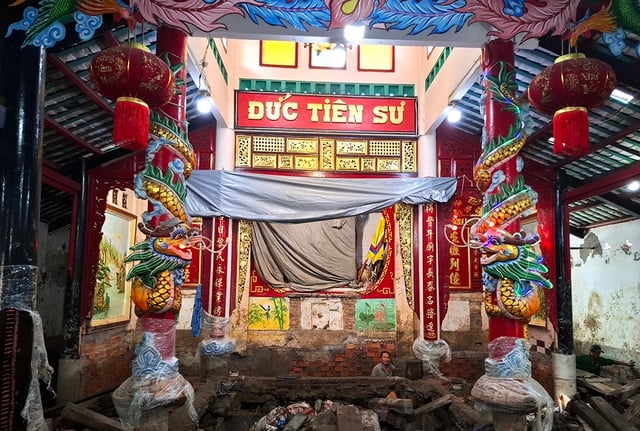
The main hall is under repair - PHOTO: HOANG PHUONG

The altar was moved to a temporary room - PHOTO: HOANG PHUONG
At that time, the plantation was a paramilitary force tasked with reclaiming land and establishing villages, combining economics with national defense. Along with using soldiers to open plantations, Kinh Luoc Su Nguyen Tri Phuong also gathered the displaced people to settle down and make a living, creating a peaceful life for the people and also putting management into order. In addition, the court also encouraged the wealthy and wealthy to recruit foreigners to reclaim land and establish villages. In the Bac Lieu area, he established many plantations, which later became the villages of Vinh Thanh, My Thuan, Binh An, Hoa Thanh, Phuoc Thanh, Tan Long...
According to Dai Nam Thuc Luc , in the 5th year of Tu Duc (1852), the security situation in Ba Thac region was unstable, the ringleader Lam Sam and his gang of several thousand people rose up to loot and kill people. Deputy Commander Nguyen Van Trang was killed by bandits. The King ordered Nguyen Tri Phuong to lead troops from Vinh Te to Ba Xuyen with Deputy Commander Ton That Nghi to lead troops to attack, winning several battles.
Legend has it that, while marching to suppress bandits in the Ba Thac region, Minister Nguyen Tri Phuong stationed his troops on a mound where a temple had collapsed. He ordered his soldiers to use trees, leaves and materials to rebuild it, and personally wrote a sign for the temple, Tien Su Temple, and reminded the local people to worship those who had contributed to reclaiming wasteland and building the village. Also according to folklore, a few years later, the Kinh Luoc mandarin Nguyen Tri Phuong returned to this area and visited the temple. He ordered the local village officials to build a front hall and two wings on both sides to serve as a place for teaching.
The ceremony of sending off the soldiers
In the early 20th century, Tien Su Temple was still a small temple with thatched roof and wooden pillars. In the year of Tan Suu 1901, Mr. Cao Minh Thanh (1860 - 1919), father of scholar Cao Trieu Phat, stood up to campaign to establish a Sacrificial Board, and mobilized people to restore Tien Su Temple with bricks and tiles instead of bamboo and leaves.

The altar and memorial tablet were moved to a temporary room - PHOTO: HOANG PHUONG
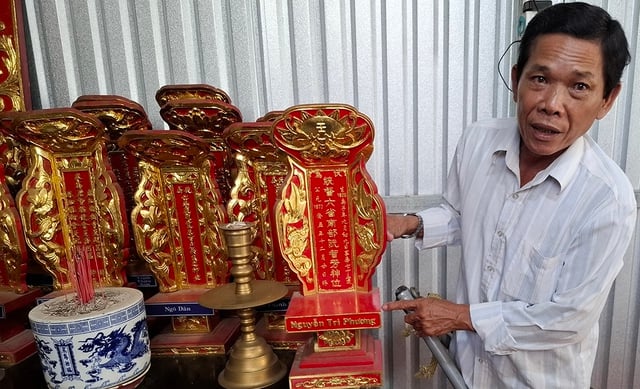
Memorial tablet of famous mandarin Nguyen Tri Phuong - PHOTO: HOANG PHUONG
In 1964, the temple returned to its old name, Tien Su Temple. Every year, on the 17th, 18th, and 19th of January, Tien Su Temple organizes worship and performs the "Sending Soldiers" ceremony. In the last days of December, before Tet, people design a boat about 2 meters long and bring it to the temple to display and prepare for the sending soldiers ceremony. The ship model resembles a miniature fishing boat, with a cockpit, a hold, a figure of a talented worker, etc.
On January 17, after the offering ceremony, at around 10am, the ritual of "asking for numbers" to be pasted on the ship's hull begins. The ceremony of sending off the soldiers takes place on the morning of the 19th. On the ship, offerings such as pig's head, boiled duck, salt, rice, etc. are displayed. The procession uses a car to carry the ship along the riverside through the streets. Where the soldier's ship passes, people set up an altar, burn incense, salt, rice, etc. When they reach the wharf, people hire a large ship to take it out to the estuary, wait for the water to ebb, and then release the offering ship out to sea. On the day of the ceremony of sending off the soldiers and releasing the ship, many people attend. (to be continued)
Source: https://thanhnien.vn/dau-an-cong-than-nguyen-tri-phuong-o-tien-su-co-mieu-185251126215507617.htm










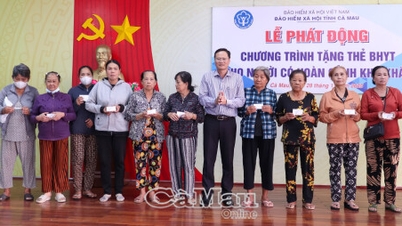



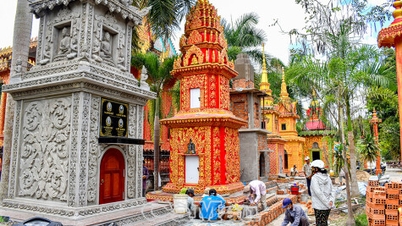


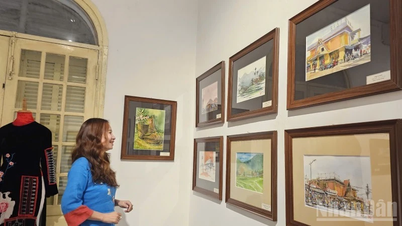



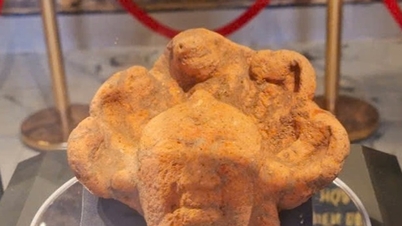










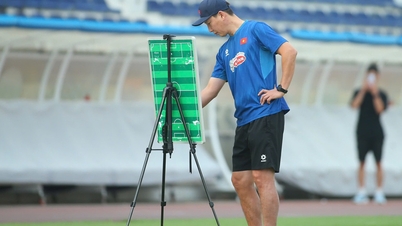



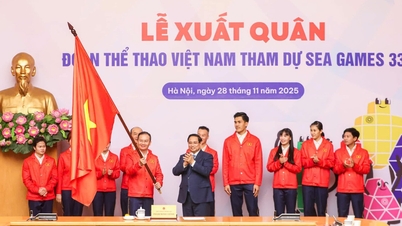

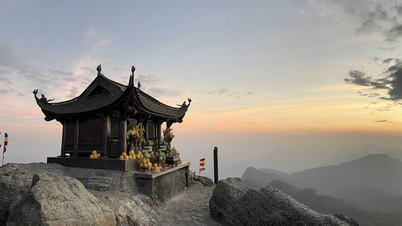

































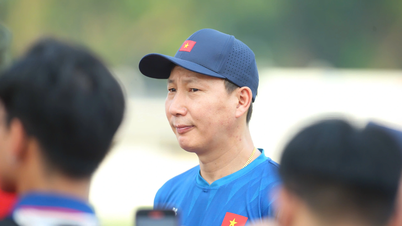



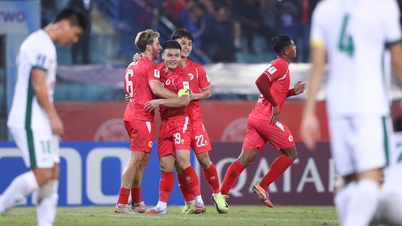




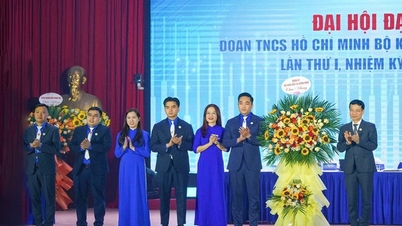




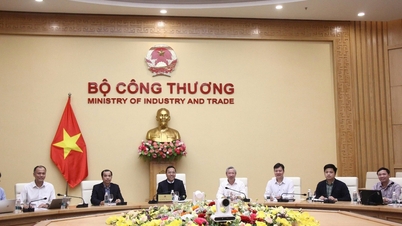






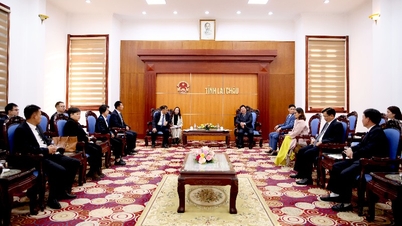

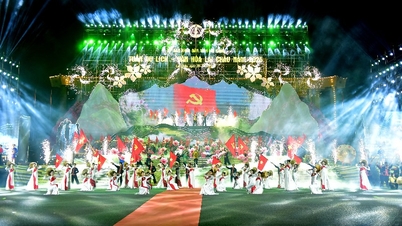


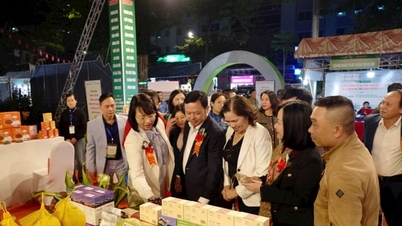
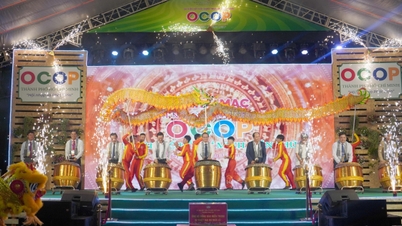











Comment (0)